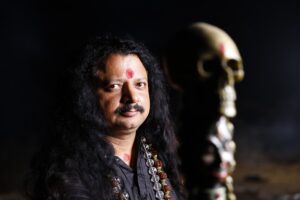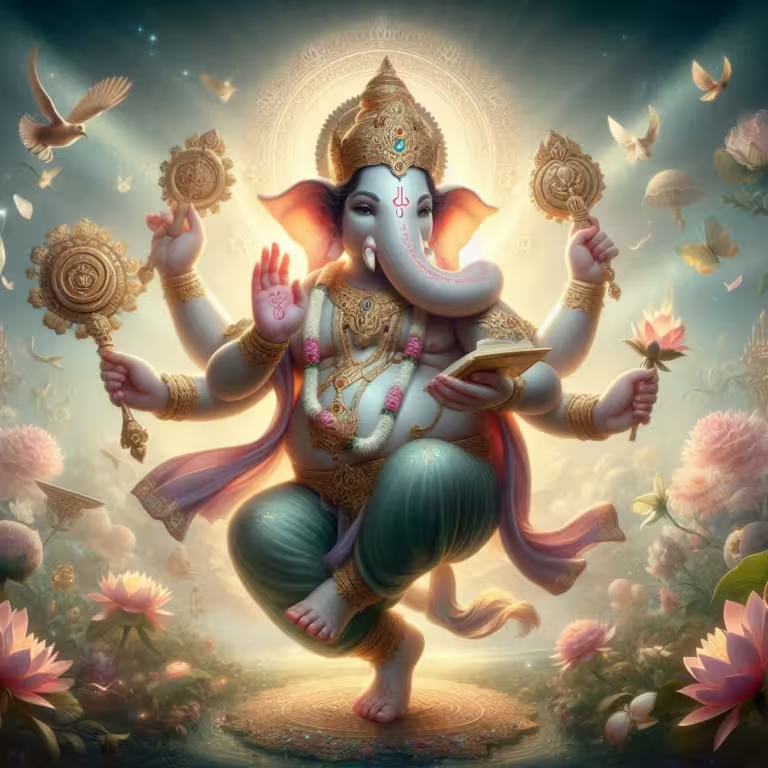Introduction
Tantra Sadhana is an ancient and mystical practice that has been shrouded in secrecy for centuries. Rooted in the teachings of the “Vigyan Bhairava Tantra,” this path to spiritual liberation is not for the faint-hearted. It requires immense dedication, discipline, and guidance from a true Guru. In this blog post, we will explore the essence of Tantra Sadhana, its significance, the role of mantras, and the crucial role of the Guru in this spiritual journey.
Table of Contents
- What is Tantra Sadhana?
- The Secretive Nature of Tantra
- The Role of Mantras in Tantra Sadhana
- Understanding the Energy Centers (Chakras)
- The Importance of the Guru in Tantra Sadhana
- Night as the Ideal Time for Tantra Practice
- The True Goal of Tantra Sadhana
- Conclusion
What is Tantra Sadhana?
Tantra Sadhana is a profound spiritual practice rooted in the ancient texts of the “Vigyan Bhairava Tantra.” This practice is a dialogue between Lord Shiva and Goddess Parvati, where Shiva, in the form of Bhairava, imparts the secretive and powerful teachings of Tantra. The essence of Tantra lies in its confidentiality, and it is often said that the true meaning of Tantra is hidden, just as one would hide their most private parts. The path of Tantra leads directly to liberation but is filled with mysteries and challenges that only a dedicated practitioner can navigate.
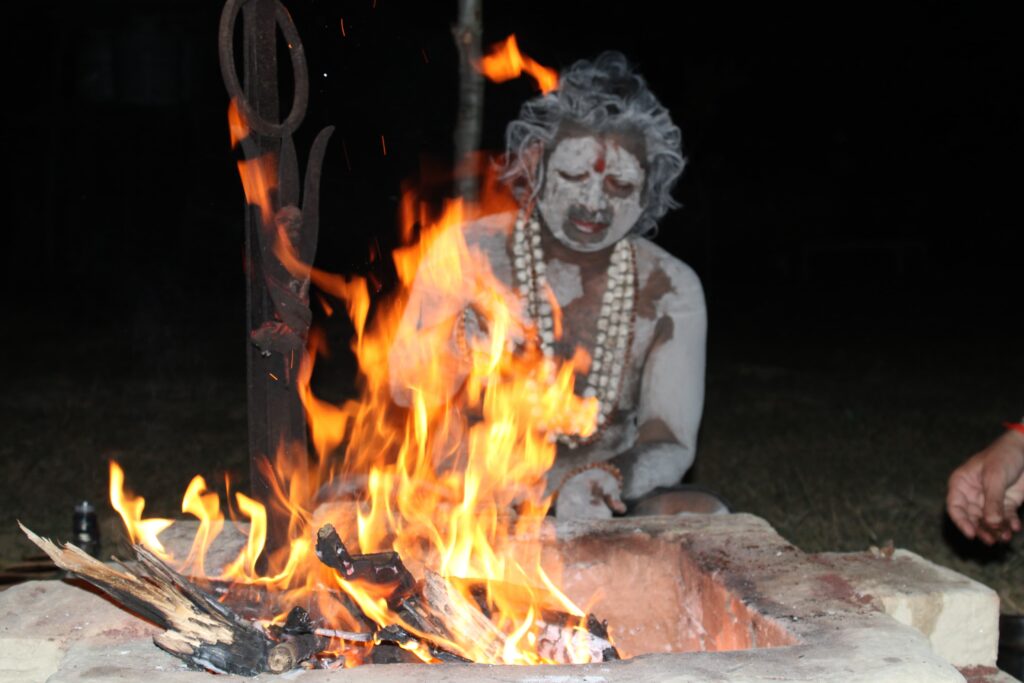
To understand more about tantra sadhana please do visit this page.
The Secretive Nature of Tantra
The very nature of Tantra is secretive, and this secrecy is crucial to maintaining its power. In Tantra Sadhana, the knowledge and practices are not to be disclosed openly. The Guru’s teachings are often mysterious and technical, requiring the sadhak (practitioner) to approach the practice with caution and respect. Tantra is not about performing rituals for worldly gains; it is a deep and transformative practice that leads to spiritual liberation.
The Role of Mantras in Tantra Sadhana
In Tantra, we apply external force using mantras (sacred chants). There are different pronunciations, different bija mantras (seed mantras), and various other types of mantras ranging from one syllable to six syllables, and even 36-syllable mantras. These mantras play different roles in elevating the sadhak’s (practitioner’s) energy, which refers to the Kundalini (spiritual energy) that resides within us. The Kundalini has seven chakras (energy centers), each with its own secrets and sciences, where different deities and powers reside. When mantras hit these centers, they create vibrations because each center has its own rhythm and vibration that can’t be physically touched or seen.
Understanding the Energy Centers (Chakras)
Our sages, who are the true scientists, conducted extensive research on these matters. All of this knowledge is attributed to Lord Bhairava. The wisdom gained by the sages and seers has been documented in our scriptures. When we take it in a strict form, it becomes Tantra, which involves external force through the use of words and mantras. If you speak harsh words, the vibrations created within the listener can evoke anger, leading to unpredictable reactions. Conversely, if you speak with love, it generates positive vibrations that can evoke love in the listener’s heart. This means that the words we speak affect the world around us.
Similarly, each of our energy centers has a specific frequency, and the sages have designed these mantras in such a way that they can activate these centers without the use of any external tools or machines. The vibrations created by chanting these mantras repeatedly start to resonate with the specific chakra you are focusing on. Initially, nothing may happen for a few days, but slowly the vibrations of the mantra become so intense that they start to affect the chakra. As these vibrations resonate with the chakra, the energy within it begins to stir.
In Tantra, these processes are depicted in pictorial form, where different deities are shown to be awakened by specific mantras. The imagery is used to explain that when a mantra’s frequency resonates with a chakra, the dormant energy within it begins to emerge. Before this energy can manifest outwardly, it creates a powerful push from within, and the person may feel like something is emerging from inside them. If one doesn’t observe this with a detached perspective, they might get carried away by the emotions and mistakenly think that they have become the deity or Bhairava or Kali themselves.
Many people claim to have achieved certain siddhis (spiritual powers), but these are just steps on the path. Advanced sages always say that these siddhis are mere stepping stones, which is why they often downplay their importance. When you chant a mantra and achieve siddhi, it means that the mantra has hit the energy center, awakening it. However, the layers of our accumulated karma, both positive and negative, cover this energy. To dissolve these layers, the Guru’s blessing, divine grace, and meditation techniques are crucial.
Even the “Vigyan Bhairava Tantra” mentions various meditation techniques that can be used to dissolve these layers. For example, by observing the breath or other methods, the karmic layers begin to peel away, leading to the purification of the chakra. Once the chakra is purified, the qualities inherent within it become part of your character, naturally shaping your behavior.
If we consider the example of Bagalamukhi, a person who receives her grace will experience the qualities of that chakra, such as the power to paralyze the opponent’s speech or actions. This is not literal paralysis, but rather the effect of the mantra causing the opponent to become speechless or mentally blocked in front of the sadhak (practitioner).
The Importance of the Guru in Tantra Sadhana
However, without the guidance of a Guru, one might misuse these powers, leading to their own mental confusion or loss of clarity. The Guru guides the sadhak on how to correctly use these powers, which meditation to practice, and what steps to take next. In this way, the sadhak progresses gradually, awakening the energies of the different chakras.
The final goal is the union of the dormant energy at the Muladhara (root chakra) with the energy at the Sahasrara (crown chakra). This is depicted in the fierce imagery of Kali, who destroys everything in her path as she advances. This fierce form represents the energy’s intense journey upwards.
In my teachings, I always start beginners with the worship of Batuk Bhairava, the child form of Bhairava, because not every sadhak has the capacity to handle the intense energies of Tantra. Bhairava is the ultimate authority in Tantra, and without his blessing, anyone who attempts Tantra will undoubtedly face madness and destruction.
Bhairava, who is Shiva himself, is the greatest Guru. The “Vigyan Bhairava Tantra” is named after him because it is Shiva, in the form of Bhairava, who teaches these techniques as a Guru. The Bhairava principle guides the true Guru-Shishya (teacher-student) tradition in Tantra.
Many people come to me seeking siddhis, wanting to attain apsaras (celestial nymphs) or yakshinis (female nature spirits), but I do not discourage them because I understand their inner turmoil. Until these mental distractions are cleared, they cannot move beyond siddhis and advance in their spiritual journey.
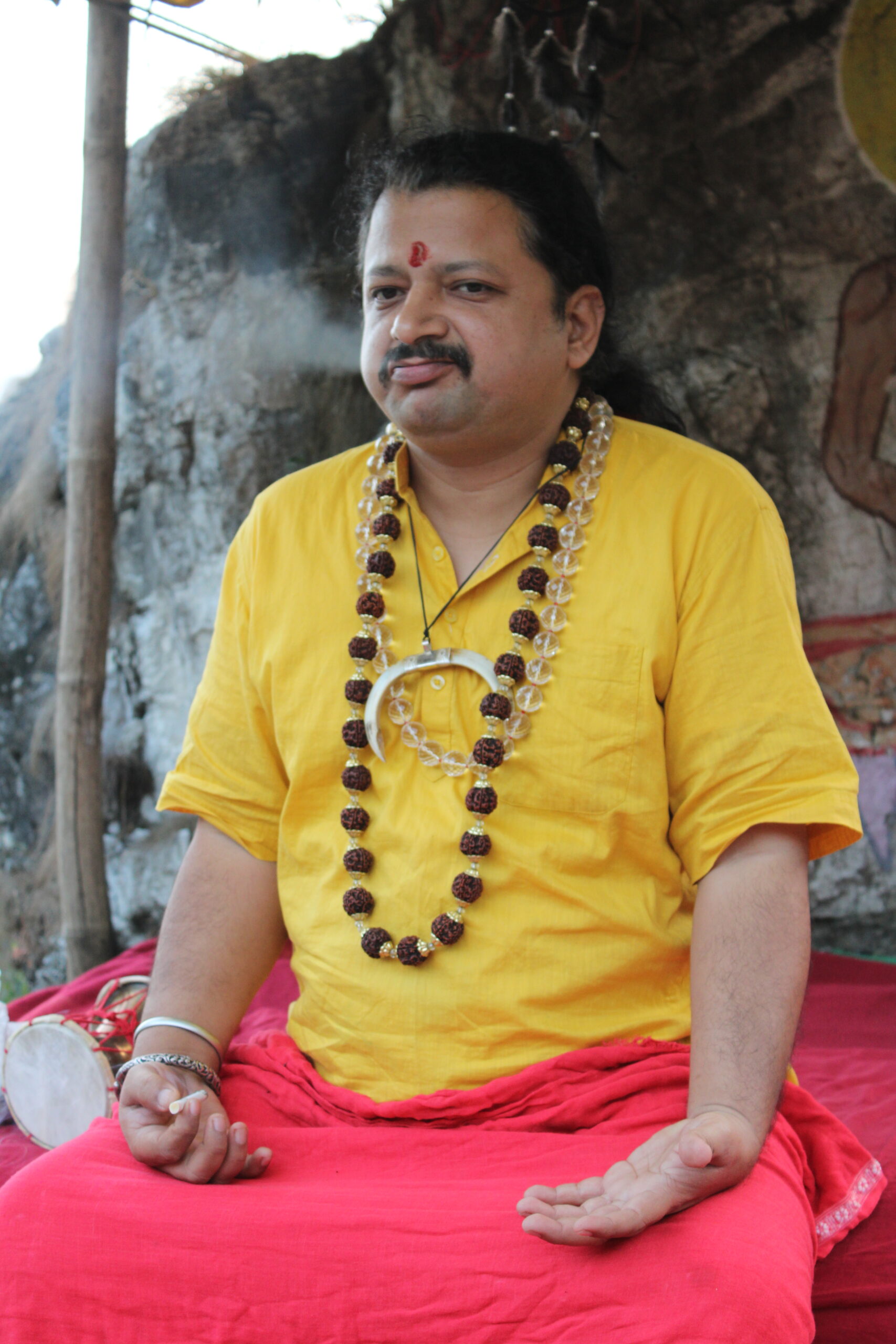
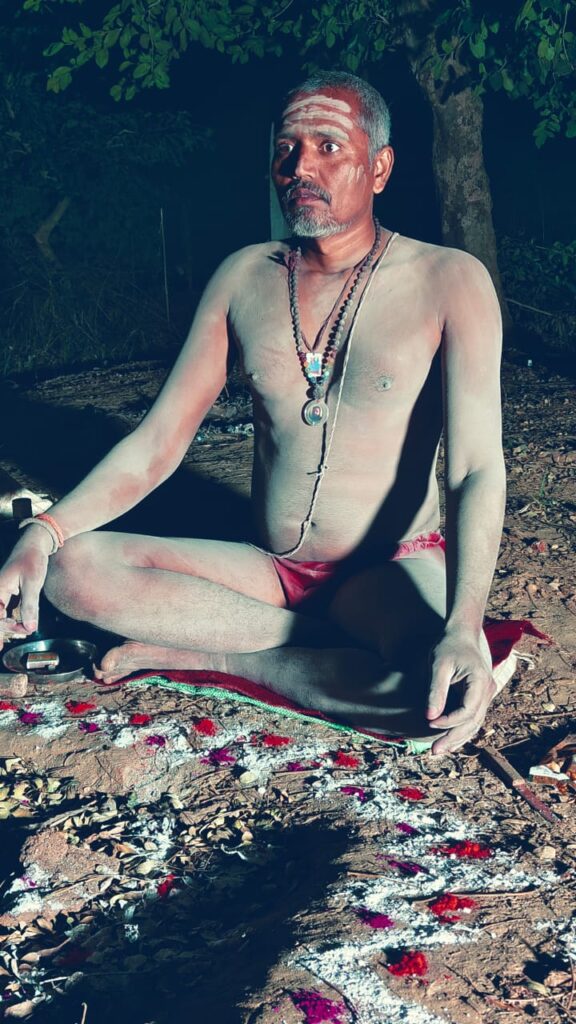
Even though some people take multiple initiations, they are still driven by greed and desire, thinking that another Guru or another initiation will solve their problems. There are also psychological factors at play, which I explain to them. When they come to practice Tantra with me, I guide them, and Lord Bhairava slowly leads them to where they need to be, removing their inner impurities.
All minor powers, such as apsaras, yakshinis, and spirits, are insignificant and easily attainable. However, many people get stuck with these minor achievements and set up small spiritual shops, where they perform minor exorcisms and get caught up in the material aspects of Tantra.
Unfortunately, Tantra has been discredited because many practitioners are uneducated and lack a proper background. They get involved with small-time gurus, attain minor powers, and start performing exorcisms, thereby giving Tantra a bad name. But Tantra is not about exorcisms or siddhis; it is a complete science that connects the individual soul with Shiva.
This is why Tantra is always kept secret, because revealing it weakens its power. The more it remains hidden, the more powerful it becomes. Tantra clearly instructs that the sadhak should remain silent, keep their gaze lowered, practice celibacy, sleep on the ground, eat only what they prepare themselves, and follow strict discipline. The practice of Tantra is primarily done at night.
Night as the Ideal Time for Tantra Practice
From my own experience in this field, I can explain scientifically that during the night, half of the earth is in darkness, and the mental vibrations of half the world are calm. During the day, the mind is bombarded with thousands of thoughts and distractions, but at night, after 10 or 11 p.m., when half the world is asleep, the mind becomes quiet and receptive to spiritual practices.
The sadhak, during the night, can achieve deep concentration because there are fewer disturbances in the atmosphere. The mantras chanted at this time resonate with the energy centers in the body more effectively. This is why night is considered the ideal time for Tantra sadhana. The vibrations are purer and more powerful, making the practice more fruitful.
However, it is not just about chanting mantras mechanically. The state of mind and the intention behind the sadhana are equally important. The sadhak must approach the practice with a pure heart and a focused mind, free from distractions and worldly desires. Only then can the true power of the mantras be realized.
When a sadhak is initiated into a particular mantra or deity, they are not just given a string of syllables to recite. They are given access to a specific frequency of energy, a key to unlock the latent potential within them. The mantra serves as a tool to align the sadhak’s vibrations with the divine energy of the deity. Over time, with consistent practice and devotion, the sadhak begins to embody the qualities of the deity.
This is why the role of the Guru is so crucial in Tantra. The Guru not only imparts the mantra but also guides the sadhak on how to use it, how to meditate, and how to conduct themselves in daily life. The Guru is the one who knows the sadhak’s strengths and weaknesses and can tailor the practice accordingly. Without the Guru’s guidance, the sadhak may get lost or even harmed by the powerful forces they are trying to invoke.
The True Goal of Tantra Sadhana
Tantra is not a path for the faint-hearted. It requires immense dedication, discipline, and courage. The sadhak must be prepared to face their inner demons, to confront the darkness within themselves, and to overcome it. This is the true meaning of Tantra – not the external rituals and ceremonies, but the internal transformation that takes place as the sadhak purifies themselves and rises to higher levels of consciousness.
Unfortunately, many people misunderstand Tantra and see it as a means to achieve worldly desires or to gain supernatural powers. They are drawn to the superficial aspects of Tantra, the rituals, and the ceremonies, without understanding the deeper significance behind them. As a result, they become trapped in the lower realms of existence, unable to progress on the spiritual path.
True Tantra is about liberation, about breaking free from the cycle of birth and death, and merging with the divine. It is about realizing one’s true nature, which is beyond the physical body and the material world. The sadhak who understands this and practices Tantra with the right attitude and guidance can achieve great heights and attain moksha (liberation).
Conclusion
In conclusion, Tantra Sadhana is a profound and powerful path, but it is also a path that must be approached with caution and respect. The sadhak must have a pure heart, a clear mind, and the guidance of a true Guru to navigate this path successfully. Only then can they unlock the full potential of Tantra and achieve the ultimate goal of union with the divine.
It is very crucial for one to have a competent guru to dive deeper in tantric lineage. If you are interested then please do check this link.


